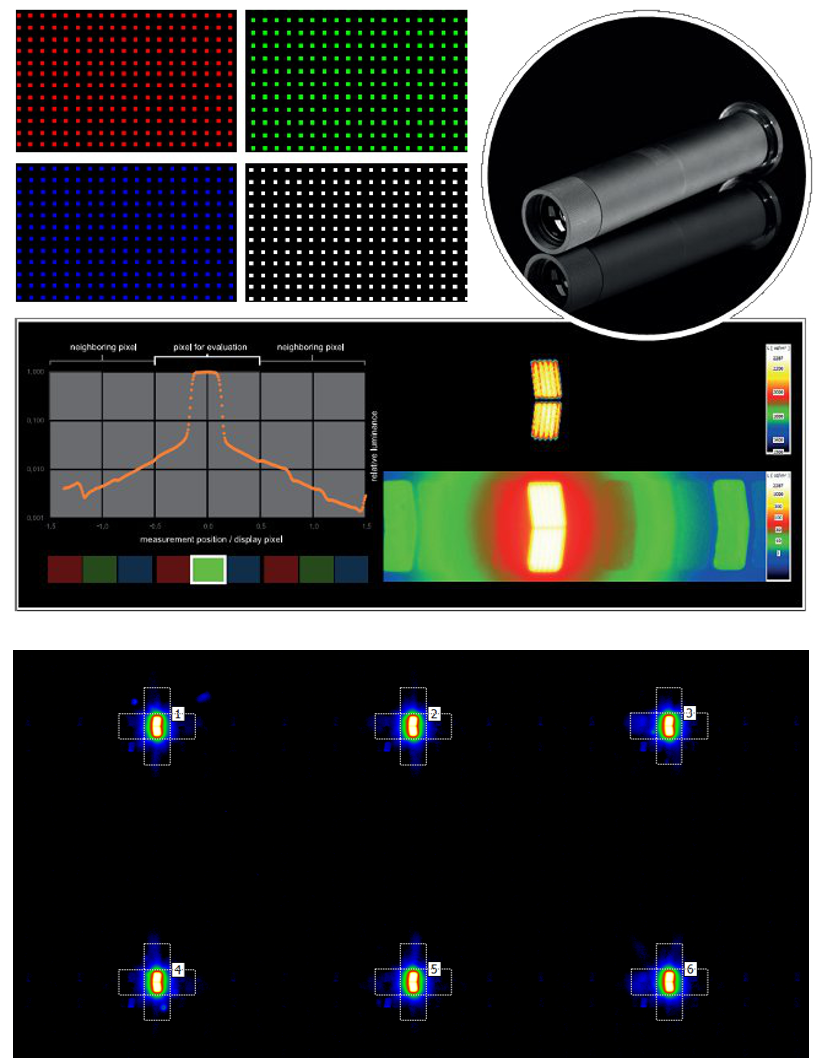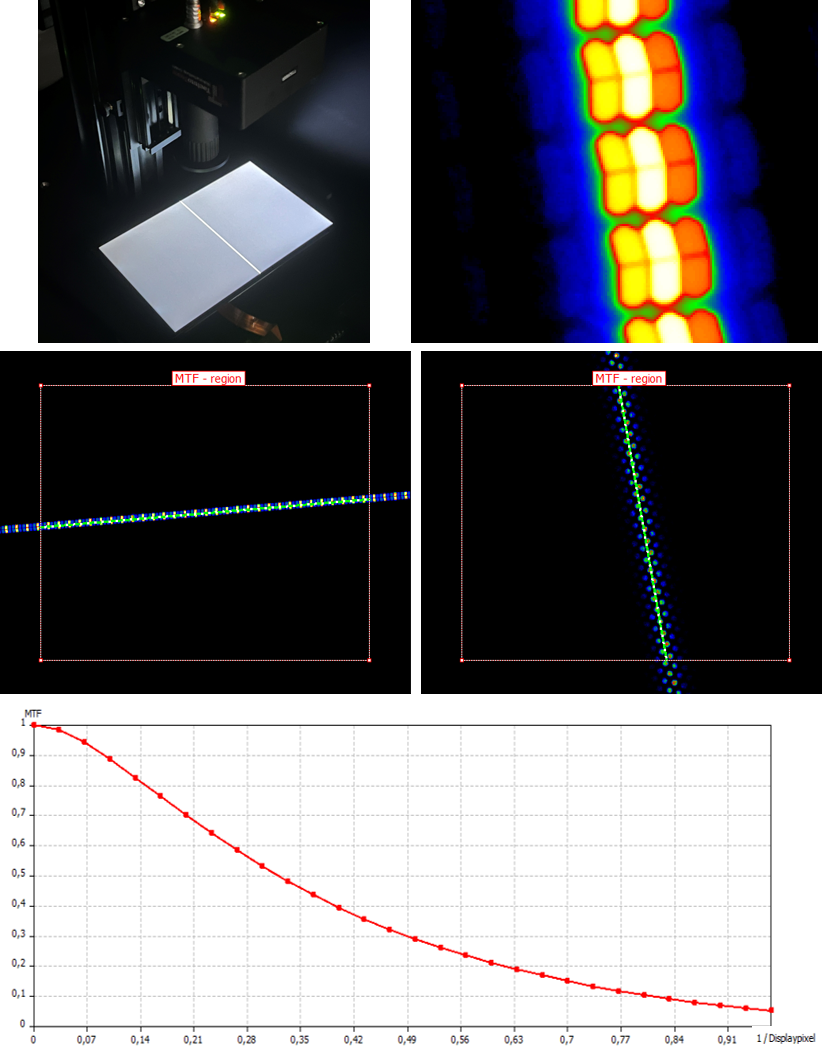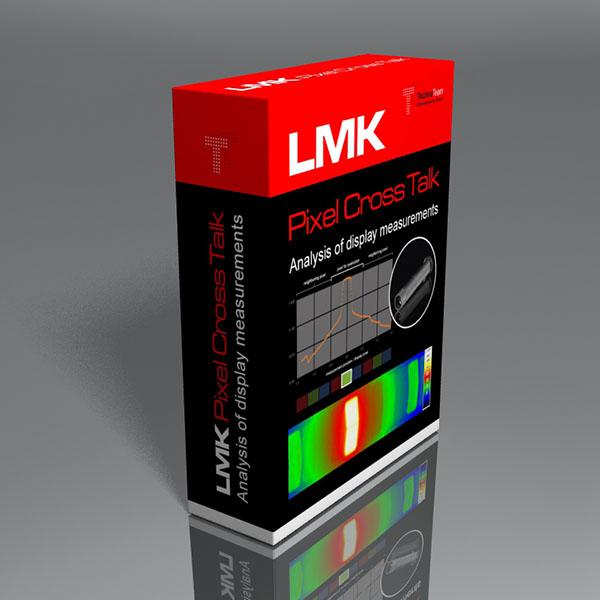- Home
- Products
- Imaging Luminance Meter
- LMK Display Metrology Software & ADD-ONS
- LMK DISPLAY RESOLUTION Pixel Crosstalk & MTF
LMK Display Metrology Software & ADD-ONS
LMK DISPLAY RESOLUTION Pixel Crosstalk & MTF
Add-on- Features
- Add-on package for resolution capability (sharpness) measurements.
- The LMK Display Resolution software is part of the display add-on package. It provides two algorithms that calculate resolution parameters based on high magnification measurements. It is used to characterize “loss of sharpness” or perceived resolution. It measures the resolution capability of the display, (which includes the complete light propagation through the display stack) based on the display’s input signal resolution.
- The software package consists of two algorithms: Pixel Crosstalk and Slanted Line MTF. We recommend them for different applications.
Description
This add-on is part of the display package add-on. It can be ordered separately or in combination with the other display add-ons.
Pixel Crosstalk
The pixel crosstalk measurement evaluates the resolution by analyzing the scattering profile of individual display pixels in horizontal and vertical direction. Both directions are measured simultaniously and in the complete field of view. During the measuring process, first, an image is taken in which all pixels are switched to dark. This image serves as correction image to account for the display backlight or other effects. Then, individual pixels or subpixels are turned on and High Dynamic Range measurement images are taken for each test image. The software automatically determines all pixel positions and calculates the horizontal and vertical "Pixel Crosstalk values" for red, green, blue, and white pixels in percent.
The fundamentals of the evaluation algorithms are based on the publication "Pixel Crosstalk: A New Metric to Characterize DOI Loss Due to AG Treatments of Display Glasses" by Thomas Fink und Udo Krüger.
- Suggested Applications: Virtual images (Head-up-Displays or Near-Eye-Displays)
- Sampling conditions: A sampling ratio above 30 camera pixels/display pixel is recommended to allow neglection of resolution decrease caused by the lens.
- Limitations: The algorithm cannot be used on displays with an irregular subpixel layout, such as pentile structures. Here we suggest to use the LMK Resolution: Slanted Line MTF instead.

單個顯示器圖元用於評估解析度
Slanted Line MTF
Slanted Line MTF is a fast way to measure the resolution capability of a display in a single shot as a function of all input frequencies. The method bases on the well-established slanted edge evaluation, which is used to characterize the MTF (Modulation Transfer Function) of optical elements such as lenses. During the measurement, the LMK is slightly rotated axially relative to the display. The display shows a single line or row with a width of 1 pixel or subpixel. A luminance image is captured using a High Dynamic Range measurement. After correcting for background and the impact of the MTF-calibrated LMK lens, the display MTF is obtained from the luminance image and evaluated for all frequencies below two times the display's Nyquist frequency.
The fundamentals of the evaluation algorithms are based on the publication "Line-Based Modulation Transfer Function Measurement of Pixelated Displays," by Kenichiro Masaoka.
- Suggested Applications: Direct view displays with and without additional layers (e.g. anti-glare layer, cover layers, decor elements ...)
- Sampling conditions: We recommend a sampling ratio above 10 camera pixels per display pixel. In addition the field of view of the camera should not crop the luminance profile of the slanted line
- Limitations: The algorithm should be used with care for virtual images. Here other aberrations such as distortion, can falsely affect the MTF slanted line resolution result.

High-magnification macroscopic lenses with an optical magnification between 0.5 and 2 are required for standard displaypixel sizes, e.g. in smartphones or laptop displays. For very small display pixels, such as, e.g., micro displays, microscopic lenses with a magnification between 5 and 50 are available as well. For Near-Eye-Display resolution measurements special NED lenses wiith a small field of view are recommended.

